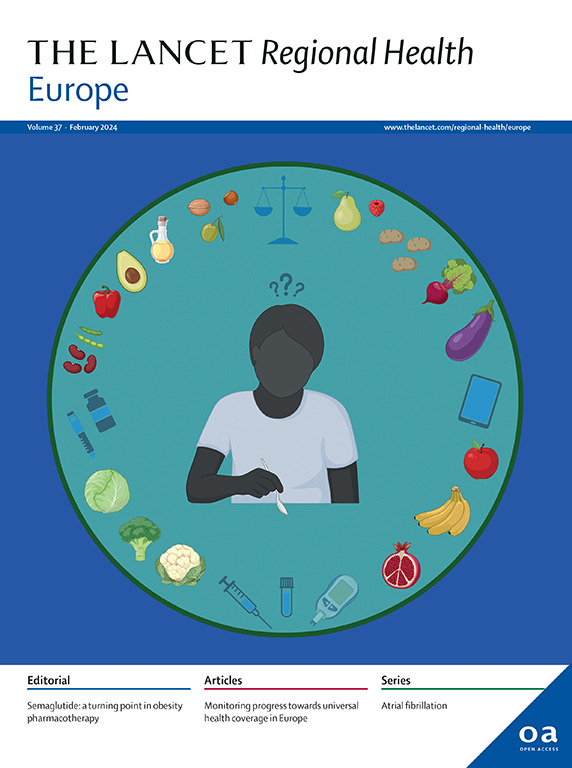Transmission of autochthonous Aedes-borne arboviruses and related public health challenges in Europe 2007–2023: a systematic review and secondary analysis
IF 13.6
Q1 HEALTH CARE SCIENCES & SERVICES
引用次数: 0
Abstract
Background
Local transmission of dengue, chikungunya, and Zika infection is an emerging public health threat in Europe. Monitoring the epidemiological trends can help define the intervention strategy. The aim of this work was to analyse epidemiological characteristics of autochthonous transmission of Aedes-borne arboviruses in Europe.
Methods
A systematic review of the literature published from January 1, 2007, to January 31, 2024, reporting autochthonous cases of dengue, chikungunya, and Zika detected in Europe was performed. We searched MEDLINE, EMBASE, and the ECDC reports. Descriptive statistics and a secondary analysis were used to summarize the epidemiological characteristics of local transmission events (LTEs), explore potential temporal trends and identify relevant associations between epidemiological variables. Time intervals between key events were analysed to identify potential delays in LTE identification and intervention.
Findings
A total of 59 studies were included, describing 56 LTEs. The frequency of LTEs increased over time, with an average of 1.25 (95% CI: 1.17–1.35) times increment every year. While the highest number of dengue LTEs was reported in France (N = 37), Italy faced the largest number of cases detected in an LTE (N = 41). Considering all the arboviral LTEs, the median time between the symptom onset of the primary case and the diagnosis of the index case (“outbreak detection”) was 35.5 days (range 23.0–76.0). Only for chikungunya, higher delays correlated with higher cumulative number of cases detected per LTE, though this may be biased due to the low sample size.
Interpretation
We have observed a gradual increase of Aedes-borne arboviral LTEs in Europe over time, and a considerable delay in outbreak detection. Improving the timeliness of LTE identification is essential.
Funding
This work was partly funded by the Italian Ministry of Health (Ricerca corrente) and by the European Union (Next Generation EU, Missione 4 Componente 1 CUP H93C22000640007).
2007-2023年欧洲本土伊蚊媒虫媒病毒传播及相关公共卫生挑战:系统回顾和二次分析
登革热、基孔肯雅热和寨卡病毒感染的本地传播是欧洲新出现的公共卫生威胁。监测流行病学趋势有助于确定干预战略。本工作的目的是分析伊蚊媒虫媒病毒在欧洲本土传播的流行病学特征。方法系统回顾2007年1月1日至2024年1月31日在欧洲发现的登革热、基孔肯雅热和寨卡病毒本土病例。我们检索了MEDLINE, EMBASE和ECDC报告。通过描述性统计和二次分析,总结了当地传播事件的流行病学特征,探讨了潜在的时间趋势,并确定了流行病学变量之间的相关关系。分析了关键事件之间的时间间隔,以确定LTE识别和干预的潜在延迟。研究结果共纳入59项研究,共涉及56例ltte。lte的频率随着时间的推移而增加,平均每年增加1.25倍(95% CI: 1.17-1.35)。虽然法国报告的登革热LTE数量最多(N = 37),但意大利在LTE中发现的病例数量最多(N = 41)。考虑到所有虫媒病毒性ltte,从原发性病例出现症状到诊断为指示病例(“发现暴发”)的中位时间为35.5天(范围23.0-76.0天)。仅就基孔肯雅热而言,较高的延迟与每个LTE检测到的累积病例数较高相关,尽管由于样本量较小,这可能存在偏差。我们观察到,随着时间的推移,欧洲伊蚊传播的虫媒病毒性ltte逐渐增加,并且在疫情检测方面有相当大的延迟。提高LTE识别的时效性至关重要。这项工作部分由意大利卫生部(Ricerca corrente)和欧盟(Next Generation EU, mission one 4 Componente 1 CUP H93C22000640007)资助。
本文章由计算机程序翻译,如有差异,请以英文原文为准。
求助全文
约1分钟内获得全文
求助全文
来源期刊

Lancet Regional Health-Europe
Multiple-
CiteScore
19.90
自引率
1.40%
发文量
260
审稿时长
9 weeks
期刊介绍:
The Lancet Regional Health – Europe, a gold open access journal, is part of The Lancet's global effort to promote healthcare quality and accessibility worldwide. It focuses on advancing clinical practice and health policy in the European region to enhance health outcomes. The journal publishes high-quality original research advocating changes in clinical practice and health policy. It also includes reviews, commentaries, and opinion pieces on regional health topics, such as infection and disease prevention, healthy aging, and reducing health disparities.
 求助内容:
求助内容: 应助结果提醒方式:
应助结果提醒方式:


